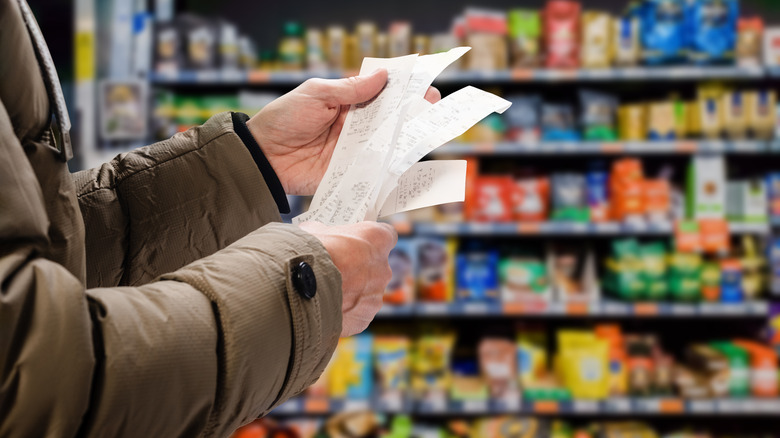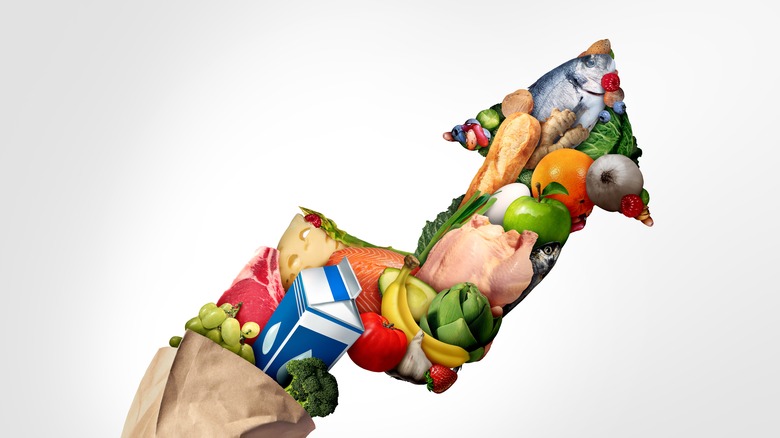Even As Inflation Peaks, Food Prices Won't Come Down Any Time Soon. Here's Why
It can seem like each trip to the grocery store is more expensive than the last — and that's not just your imagination. Inflation has risen consistently over the last few years, thanks in part to the COVID-19 pandemic disrupting the supply and distribution chains, and the Russia-Ukraine War, which interrupted grain and cereal productions (per Bloomberg).
High food prices may have become the new normal, but that doesn't mean they've been easy to adjust to. According to Forbes, food has seen a 10.6% increase in cost over a one-year period. Cooking at home raised roughly 12%, with the average family of four spending just under $1,000 on groceries each month. Going out to eat wasn't any cheaper — dining out prices rose 8.5%.
Forbes reports that overall inflation has been trending downward since July 2022, and though prices may still be rising, they may not be such big jumps all at once. While this may seem like good news, unfortunately, it doesn't mean that food prices will be coming back down any time soon.
Customers will probably continue to see high prices
Inflation may have slowed, but Bloomberg reports that shoppers are still seeing higher grocery bills on average. The cost of breads and cereals spiked due to the Russia-Ukraine War, and according to The New York Times, some people have even turned to purchasing chickens, rather than pay the high grocery store prices.
There are a few factors contributing to the higher food costs shoppers are now seeing. Energy prices are still high, Bloomberg reports, making it more costly to produce foods, even when prices may be lower on the materials that go into making them. Additionally, workers that produce products have been campaigning for higher wages, with more employees pushing for a higher minimum wage. When it comes to distribution, suppliers want retailers to pay more for their products.
Though inflation may have peaked, and monthly inflation increases are slimming, shoppers may continue to see higher prices on food products due to these factors.

